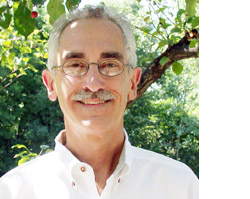
KC: Why have you hung around so long in the audio business?
JL: I love audio. I’ve never found another industry where the main reason to be in the business – and this can get you in trouble sometimes – is not about making money. We’re not “suits.” We love music, we love reproduction of sound, we love recording.
I’m not a performer, but I love listening to high-fidelity reproduction of sound, whether it be in my home or in a sound reinforcement system. It’s my life.
KC: Are you optimistic about the future of the industry?
JL: Yes. Even though the audio industry is just a fly on the back of the economy, we’re getting to take advantage of what’s happening in the computer industry. At least they let us use their stuff. (laughs)
So there will be convergence – which is just a buzzword – that will continue to happen in a technology sense. We’ll see more and more totally integrated systems that are linked digitally, manipulated digitally, but we’ll have just as much trouble making it work right as anything now.
There will always be a need for people who do good sound, and some folks will chose to do just sound and they’ll do just fine in a business sense. For every big church with a larger production facility than you could have ever imagined 15 years ago, in terms of audio, video, recording, production, duplication, there’s still 100 churches that primarily need just a good PA system.
And there will always be a desire for good sound and a general lack of understanding in attaining it. So not everybody will just be able to throw together a sound system with any sort of good or even mediocre results.
KC: I’ve noticed that every generation seems to think that they’ve invented everything truly important to an industry, pretty much ignoring the past. Do you find that to be true as well?
JL: (laughs) In the early 1960s, EV used to make these things we called line radiators and they were fundamentally stacks of automobile speakers, with some engineering work to give them a unique coverage pattern over a fairly wide bandwidth. That’s still the essence of things like our X-Line and Xlc concert line arrays the basic concept coming around for at least the second time, with the caveat that they are on steroids in comparison, with tons more engineering.
I probably thought we had invented everything in my generation at one point, but of course, the longer you’re around the more you come to understand that most of the important work has already been done.
A few years ago, Bob Coffeen brought a Western Electric compression driver to EV, built in 1935 or so, and the precursor to the JBL 4-inch diaphragm, 2-inch-exit drivers. This driver didn’t have a permanent magnet. Instead, you got the magnetic motor strength by supplying the specified DC current to the field coil.
So we took this driver into the anechoic chamber at EV, bolted it to one of our horns, found a power supply and tenderly put the juice to it, and ran a curve on it. Then we curved the current EV DH1A driver on the same horn. The curves looked exactly the same, except the DH1A went to about 20 kHz, while the Western Electric driver cut out at about 12 kHz.
When you think about that, it’s real humbling. Sure, if you “blasted” the Western Electric driver, it would blow up, but they had come so far at that early stage. By the way, I understand that James Lansing (founder of Altec Lansing and JBL) hand-machined the phase plugs for those drivers.
I was privileged to be on hand when Dr. C. P. (“Paul”) Boner first popularized equalizing a sound system to get the proper response. He was doing parametric EQ before the term was invented, using a 600-ohm mixer and filter bank, looking at the house curve and then working with toroidal inductors made by his friend, Gif White (of White Instruments), putting capacitors across the load to adjust frequency, and then adding resistors to get the right bandwidth.
Thus, the first parametric EQ. Once you got this soldered together, it wasn’t quite as easy as turning a knob to make a change, but he was able to put as many of these filters in as needed to flatten the house curve.
My point is that a lot went on before, which will continue to be the basis of what we do in the future.
We’ve had our ups and downs at EV, but boy, it has been interesting.
Keith Clark is editor in chief of ProSoundWeb and Live Sound International.


